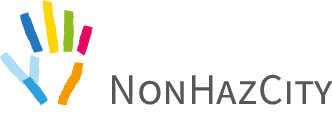The project partners in Russia for the project NHC2 have been Ecological Union and the St Petersburg State University of Aerospace Instrumentation. Together they have been working with communities, businesses and authorities to make people aware of the dangers and learn how to reduce the hazardous chemicals in everyday life. They reviewed the activities carried out in Russia in 2019-2021 during the NonHazCity2 project and would like to share their insights, results and challenges.
1. Standards and government regulation
Why can’t hazardous substances just be banned? The substance is created, tested and put into industrial use, but often only after a while experts understand that it is dangerous. After that we try to displace this substance from production chains. It takes a long bureaucratic journey to impose legal restrictions on substances. During previous years of the project, a detailed list of substances hazardous to human health and the environment was created and now our aim is to raise awareness and motivate behaviour change on all levels of decision making.
2. Increasing consumer literacy
We have developed materials that will help all people protect themselves from exposure to hazardous substances: The How to Clean Hazardous Substances from Homes guide will allow you to inspect every corner of your home from dressing room and kitchen to bathroom and make your environment safer. You can also watch a video that will clearly tell you where to look for hazardous substances in the house. A mini-series on plastic diet “Greenland: A Story Without Plastic” was created by a Russian blogger. Brochure “X-Files in Everyday Life: How to Reduce the Amount of Hazardous Substances in Your Kitchen”
3. Raising awareness of the business community
On average, people spend a third of their life in the office, so the guide “How to make an office greener and create a work environment free of toxins” will help business owners and workers to keep their workspace safe.
There is also a series of funny videos on the topic of hazardous chemicals at home and in the office.
For tips and information on kitchen and food preparation, see the brochure “Safety First: Avoiding Hazardous Substances in Food Contact Materials.”
4. Development of green public procurement
In 2020 the volume of public purchases in Russia was as high as 27% of the WFP. It means that by introducing chemical safety criteria great results can be achieved.
During the project partners from different countries have developed a guide on public green procurement. The Russian side has created a “Guide to the inclusion of environmental criteria in public procurement.” Public organizations face many obstacles before they can implement GPP principles in their working process. One of our main tasks is to create practical cases and help authorities to include environmental criteria in their procurement as soon as possible.
5. Eco-management and chemical risks
Most of the environmental management standards (ISO, EMAS) concern resource, energy efficiency and waste management. St. Petersburg State University of Aerospace Instrumentation analyzed the production and environmental activities of 15 enterprises and prepared a brochure “Guidelines for the management of chemicals within the environmental management system.“
For a wider audience, the university has developed a textbook and training course “Tools for reducing chemicals in urban ecosystems”, which is now being distributed among students. The course also includes videos presented on the YouTube channel.
In total, NonHazCity2 information campaign managed to reach an audience of several million people in the Baltic region. This work is another big step towards creating a toxin-free environment. Everyone can contribute to the protection of the environment and their own health. During the project, many useful guides were created. Take them to work and together we will be able to make our cities safer and save the planet!
List of useful materials in Russian:
“Guidelines for the Inclusion of Environmental Criteria in Public Procurements”
How to make your office greener and create a toxin-free work environment
Home X-Files: How to Reduce Hazardous Substances in Your Kitchen
“How to clean the house of hazardous substances”
“Tools for the reduction of chemicals in urban ecosystems”
“Safety first: how to avoid hazardous substances in materials in contact with food”
“Guidelines for the management of chemicals within an environmental management system”
Fantasy video series “Greenland: A Story Without Plastic”
Video “Hazardous Chemicals in the House”
Video “Hazardous Chemicals in the Office”
More materials and publications of the project in Russian here

